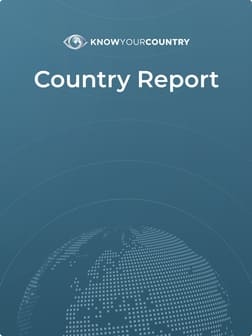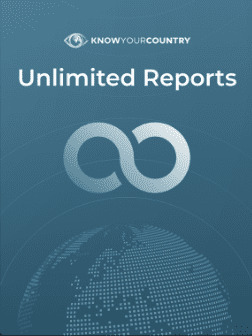
Turkmenistan Country Summary
Sanctions
No
FATF AML Deficient List
No
Terrorism
Corruption
US State ML Assessment
Criminal Markets (GI Index)
EU Tax Blacklist
Offshore Finance Center
Background Information
Anti Money Laundering
FATF Status
Turkmenistan is no longer on the FATF List of Countries that have been identified as having strategic AML deficiencies
Latest FATF Statement - 21 June 2013
The FATF welcomes Turkmenistan’s significant progress in improving its AML/CFT regime and notes that Turkmenistan has largely met its commitments in its Action Plan regarding the strategic deficiencies that the FATF had identified. Turkmenistan is therefore no longer subject to FATF’s monitoring process under its on-going global AML/CFT compliance process. Turkmenistan will work with EAG as it continues to address the full range of AML/CFT issues identified in its Mutual Evaluation Report, and further strengthen its AML/CFT regime.
Compliance with FATF Recommendations
The last Mutual Evaluation Report relating to the implementation of anti-money laundering and counter-terrorist financing standards in Turkmenistan was undertaken in 2023. According to that Evaluation, Turkmenistan was deemed Compliant for 7 and Largely Compliant for 20 of the FATF 40 Recommendations. It was deemed Highly Effective for 0 and Substantially Effective 4 with regard to the 11 areas of Effectiveness of its AML/CFT Regime.
US Department of State Money Laundering assessment (INCSR)
Turkmenistan was last deemed a Jurisdiction of Primary Concern in the US Department of State 2018 International Narcotics Control Strategy Report (INCSR). The Overview from that report was as follows: -
Turkmenistan is not a regional financial center. There are five international banks and a small, underdeveloped domestic financial sector. The largest state banks include the State Bank for Foreign Economic Relations, Dayhanbank, Turkmenbashy Bank, Turkmenistan Bank, and Halk Bank. There are two smaller state banks, Senagat Bank, which provides general banking services, and Rysgal Bank, which was created by the Union of Entrepreneurs and Industrialists for its members. There are also five foreign commercial banks: a joint Turkmen-Turkish bank, a branch of the National Bank of Pakistan, the German Deutsche Bank and Commerzbank, and Saderat Bank of Iran. The two German banks provide European bank guarantees for companies and the Government of Turkmenistan; they do not provide general banking services. The country’s significant mineral and hydrocarbon exports are paid for through offshore accounts with little public scrutiny or accounting. Since the government introduced numerous limitations on foreign currency exchange in 2016, converting local currency (manat) into foreign currency has become very difficult.
Turkmenistan’s FIU, the Financial Monitoring Service, officially became a member of the Egmont Group on July 3, 2019.
Over the last few years, the government has taken positive steps to combat money laundering and corruption, but lack of government transparency in Turkmenistan makes it extremely difficult to get information and data on money laundering, including efforts to combat money laundering through law enforcement investigations. There is a need for capacity building for law enforcement, customs, and border authorities in order to better recognize and combat money laundering, and the government should proceed with reforms to bring Turkmenistan’s laws and regulation in line with international standards.
Overview
Turkmenistan is not a regional financial center and is relatively isolated from the global financial system. Apart from the Central Bank of Turkmenistan, there are eight domestic banking institutions. Three foreign commercial banks have operations in Turkmenistan. Deutsche Bank and Commerzbank also have representative offices in Turkmenistan and provide bank guarantees to companies; they do not offer retail banking services. Deutsche Bank is the primary bank for conducting international transactions with Turkmen banks and provides guidance and monitoring on anti-money laundering/combating the financing of terrorism (AML/CFT) measures. Turkmen citizens, to include government officials and their extended families, are known to have offshore accounts with little public scrutiny or accounting. Limitations on foreign currency exchange make converting the local currency (manat) into foreign currency very difficult.
Sanctions
There are no international sanctions currently in force against this country.
Bribery & Corruption
Rating (100-Good / 0-Bad)
Transparency International Corruption Index 18
World Governance Indicator – Control of Corruption 6
Ranking among the most corrupt countries in the world, Turkmenistan suffers from widespread corruption in every institution and across every sector of its economy. Bribery is required to obtain any kind of service or to secure a procurement contract, and maintaining close connections with government officials is imperative to doing business. The country's public administration relies heavily on patronage networks. Large projects require a presidential decree, and procurement processes are generally carried out arbitrarily and with no oversight or regulation. The law "On Combatting Corruption" criminalizes a range of corruption offenses, and public officials are subject to a code of conduct. However, enforcement is very poor, and corruption investigations are usually politically motivated. The administration of current President Berdimuhamedow has maintained a tight grip on power, and regime critics resort to self-censorship. Thus, information on corruption in Turkmenistan is scarce. For further information - GAN Integrity Business Anti-Corruption Portal
Economy
Turkmenistan is largely a desert country with intensive agriculture in irrigated oases and significant natural gas and oil resources. The two largest crops are cotton, most of which is produced for export, and wheat, which is domestically consumed. Although agriculture accounts for roughly 14% of GDP, it continues to employ nearly half of the country's workforce. Hydrocarbon exports (mainly natural gas) make up 31% of Turkmenistan’s GDP, with 60% of gas exports going to China and the remainder to Russia and Iran. Ashgabat has explored two initiatives to bring gas to new markets: a trans-Caspian pipeline that would carry gas to Europe and the Turkmenistan-Afghanistan-Pakistan-India gas pipeline. Both face major financing and security hurdles and are unlikely to be completed soon.
Turkmenistan’s autocratic governments under presidents NIYAZOW (1991-2006) and BERDIMUHAMEDOW (since 2007) have made little progress improving the business climate, privatizing state-owned industries, and combatting corruption, limiting economic development outside the energy sector. High energy prices in the mid-2000s allowed the government to undertake extensive development and social spending, including providing heavy utility subsidies.
Low energy prices since mid-2014 are hampering Turkmenistan’s economic growth and reducing government revenues. The government has cut subsidies in several areas, and wage arrears have increased. In January 2014, the Central Bank of Turkmenistan devalued the manat by 19%, and downward pressure on the currency continues. Turkmenistan continues to report GDP growth of nearly 10% per year and claims substantial foreign currency reserves, but non-transparent data limit international institutions’ ability to verify this information.
Agriculture - products:
cotton, grain, melons; livestock
Industries:
natural gas, oil, petroleum products, textiles, food processing
Exports - commodities:
gas, crude oil, petrochemicals, textiles, cotton fibre
Exports - partners:
China 68.6%, Turkey 4.9% (2015)
Imports - commodities:
machinery and equipment, chemicals, foodstuffs
Imports - partners:
Turkey 24.9%, Russia 12.3%, China 10.9%, UAE 9.1%, Kazakhstan 5.1%, Germany 4.6%, Iran 4.4% (2015)
Investment Climate - US State Department
Turkmenistan is a relatively large country (slightly larger than the state of California), but sparsely inhabited (about 5 million), with abundant hydrocarbon resources, particularly natural gas. Turkmenistan’s economy depends heavily on the production of natural gas, oil, petrochemicals and, to a lesser degree, cotton and textiles. Based on data provided by the Government of Turkmenistan, the country’s 2014 Gross Domestic Product (GDP) was USD 43.5 billion. According to the World Bank, Turkmenistan’s GDP amounted to USD 47.93 billion for the same period. The government has reported an implausibly high GDP growth of 6.7 percent in 2015.
In 2008, in an effort to improve investment conditions in the country, the government adopted legal reforms on foreign investment and licensing. Nevertheless, the lack of established rule of law, inconsistent regulatory practices, unconvertible currency, and unfamiliarity with international business norms are major disincentives to foreign investment. Corruption remains widespread in both public and private sectors in Turkmenistan, and the ability to develop and maintain good relationships with the government is essential for doing business in the country. The government strictly controls foreign exchange flows and the conversion of the local currency, the manat, is growing more problematic. Expropriation is not common in Turkmenistan. The government’s dispute settlement clause in contracts generally allows for arbitration in a venue outside of Turkmenistan. While Turkmenistan has undertaken some initiatives to improve Intellectual Property Rights (IPR) protection, including the creation of the State Agency for Intellectual Property and the signing of some WIPO (World Intellectual Property Organization) conventions, it has not adopted comprehensive administrative and civil procedures to improve the enforcement of IPR.
Although Turkmenistan is incrementally amending its laws to meet international standards, the country’s regulatory system is not implemented transparently, and the government has influence over courts’ decision-making processes. The country’s autocratic political system has been stable. Turkmenistan has not had much success in attracting FDI from American companies. Although slowly maturing and diversifying, the economy is still largely underdeveloped. Lower global oil prices have slowed the economy and put pressure on its currency. The government’s introduction of severe limitations on currency conversion and a sudden pursuit of a policy of export promotion and import substitution impede foreign trade. In November 2015 the IMF projected an almost 29% decrease in foreign trade turnover from $34.5 billion in 2014 to $24.6 billion in 2015.
- Political stability is probably the most positive aspect while rampant corruption and lack of transparency are the most negative aspects of the country’s investment climate.
- The Energy sector, construction, and petrochemicals are the sectors that have historically attracted the most investment in Turkmenistan.
Key issues to watch: developments in the financial sector, including the manat-dollar exchange rate and the severity of restrictions on currency conversion, and the degree to which the Government of Turkmenistan pays its debts to foreign and domestic companies.
Turkmenistan possesses the world’s fourth largest natural gas reserves. Potential investors are attracted to Turkmenistan’s energy, petrochemicals, textile and construction sectors. In 2012, President Berdimuhamedov announced that Turkmenistan would spend USD 41 billion on domestic construction projects in the coming years, and the government has announced that overall capital investment in the construction sector amounted to about USD 49 billion in total at the end of 2015. According to government data, 456 manufacturing and cultural facilities worth about USD 10 billion were commissioned in 2014.
In September 2015, the government announced that 428 facilities worth $9.7 billion will be commissioned in 2016. These projects include new international airports in Ashgabat and Turkmenabat, railway and motorway bridges over the Amu Darya river in Lebap province, a new international railway from Atamyrat (Turkmenistan) to Andhoi (Afghanistan), the Olympic complex in Ashgabat, hotels in Avaza, four major medical centers in Ashgabat, gas turbine power stations, five major villages, and other facilities. President Berdimuhamedov said the government plans to invest about USD 18 billion in construction of over 228 facilities, including the construction of the Turkmenistan-Afghanistan-Pakistan-India (TAPI) gas pipeline project, a gas chemical complex for the production of 467 thousand tons of polyethylene and polypropylene, a gas-to-liquid plant with a capacity of 600 thousand tons of gasoline per year, airports in the city of Atamyrat in Lebap province and the city of Garabogaz in Balkan province, and a cement production plant with a capacity of one million tons per year.
While the government has expressed interest in establishing a securities market and even adopted a Law on Securities in November 2014, Turkmenistan is still in the process of developing the necessary legislative and regulatory framework required for the formation of such a market.
Country Links
Central Bank of Turkmenistan

Buy Full Turkmenistan Report
$25 one time payment
- Risk Analysis
- Corruption
- Economy
- Sanctions
- Narcotics
- Executive Summaries
- Investment Climates
- FATF Status
- Compliance
- Key Findings

Unlimited Reports
$40 Monthly
